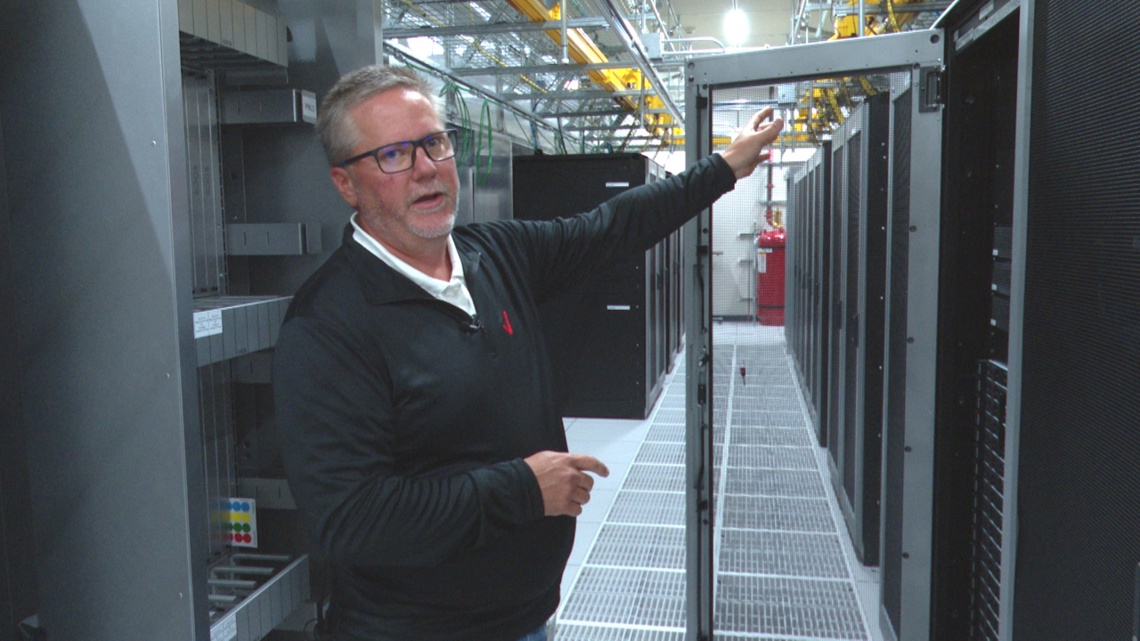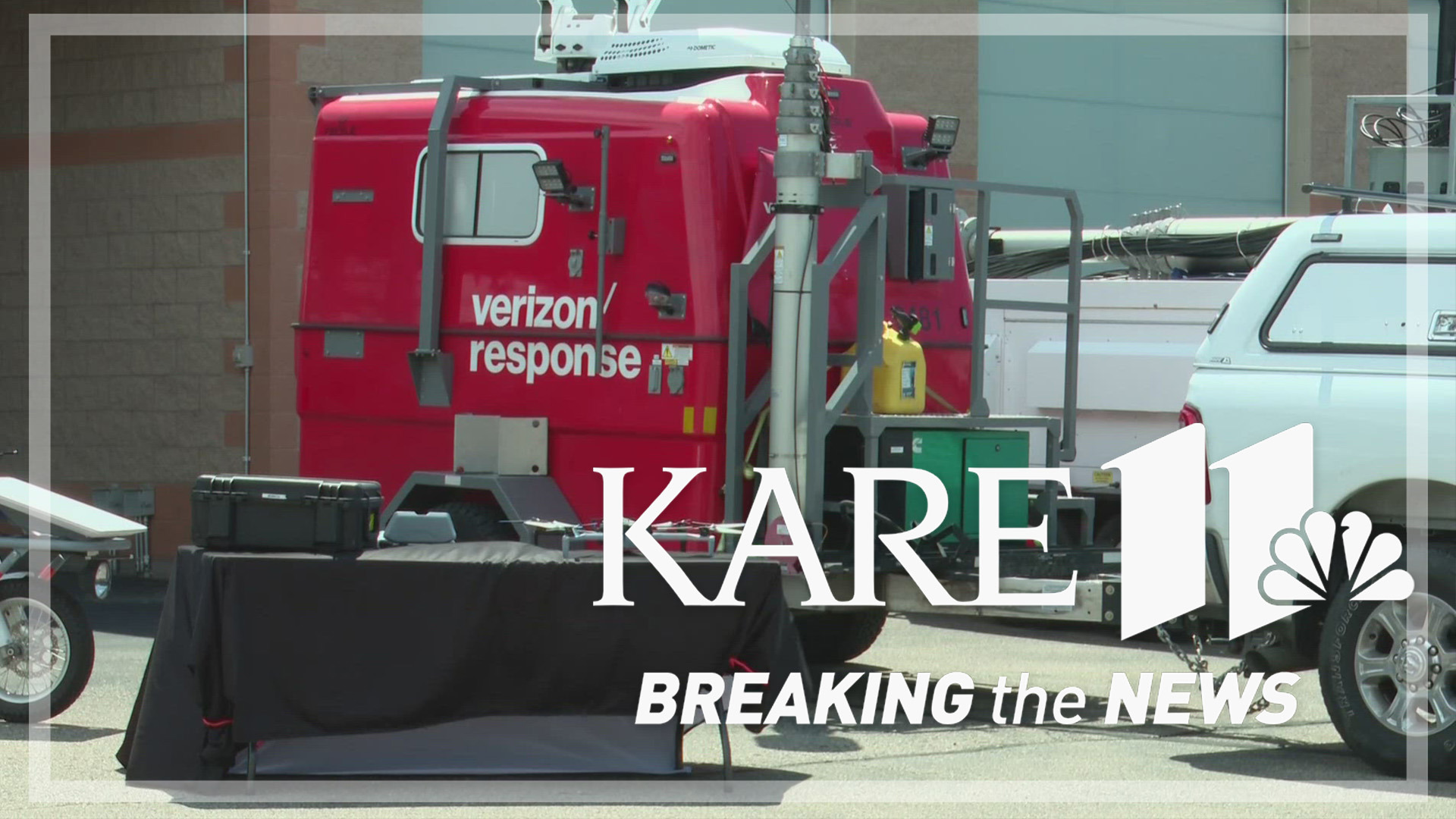MINNEAPOLIS — Access to data and phone service is critical for first responders in a natural disaster, especially those events that take down existing services.
Verizon is one of the companies that can fill that void, by bringing mobile crisis response experts and equipment to first responders. One of the company's most important tools is a trailer called Spot that includes a generator, satellite dish, and portable cell service.
"The trailer is the workhorse of the crisis response teams," Mike Olson, a crisis response manager for Verizon, told KARE 11.
"It's specifically designed so we can pull up to an emergency operations, or mobile command center, and provide just that little bubble of cell service the first responders need."
Last year he was dispatched to a search for a missing Wisconsin boy in the Porcupine Mountains Wilderness State Park in Michigan's Upper Peninsula. He said the temporary data service was essential to helping search commanders rescue the boy.
"All of their search and rescue technology is done through cellular phones, and without enough cell service their maps couldn't work, so they had reverted to paper maps," Olson explained.
"When we showed up the dots on their maps started showing up, and they were able to cordon off and mark off the maps where they'd searched already. We actually found that 8-year-old boy who'd been missing for 49 hours."
Olson also travels with an electric mountain bike equipped with a pico cell network extender and Starlink satellite backhaul. It's designed for getting into areas that are too remote or rugged for other mobile service vehicles.
He also provides aerial surveillance services to first responders using a drone that transmits live video and is equipped with a thermal imaging camera.
"Live video coverage back to their emergency operations center, so they could direct the people that are on the ground to do what they need them to do," Olson said.
He noted that the mobile crisis equipment provides cell service to first responders regardless of carrier.
Verizon also has larger equipment that can be driven or towed to areas to provide temporary service or a boost. One of them can be used to replace a cell transmitter that has been knocked offline.
"An example of where we would use something like this is if there was a storm that damaged our antenna structure," Rick Goldschmidt, Verizon's regional engineering director, told KARE 11 as he stood next to a trailer with a portable tower on it.
"We could pull this up right next to it, take the fiber that’s in that building already and plug it into this asset and we’d be back up on the air."
Goldschmidt and Olson spoke to KARE during a recent tour of Verizon's switching operations center in the Twin Cities, where all cellphone calls, texts, and mobile data connections are processed. It's a secure building at a location that is not publicized as an extra precaution.
The 70-thousand-square-foot structure serves Verizon customers in Minnesota, North Dakota, South Dakota, Iowa and Nebraska. Redundancy and resiliency are the watchwords of the operation, part of the overall mission of reliability.
"We like to say it's like wearing a belt and suspenders with an extra belt in your back pocket," Goldschmidt remarked.


The facility features rooms full of servers, some of which are designed to work with emergency cloud platforms and others for more traditional digital services. They're both far removed from the days of long-distance operators at switchboards or mechanical switching machines that helped complete phone calls across a network.
"These are switching facilities, but switching is a dated term if you will. Now it’s all electronic. It’s all IP-based," Goldschmidt explained.
There's a lot of advanced technology at work just keeping the electronics cooled. Chilled air is pushed through the machines with fans, sending warm air into collection areas so it can be returned to the air handling system without making the rest of the room warm.
"No matter what the information that you’re doing on your phone, through the cell towers that come back through here, this is where it all gets processed, and it gets sent to a destination."
Constant power flow through the facility is fortified with two three-megawatt generators in the facility's parking lot, sitting on a week's worth of diesel fuel.
"These generators are tested every week, so they run a cycle to make sure that not only do the generators start but it transfers the load, that the building uses, and then we feed our equipment and make sure that everything works without a glitch."
What if there's a gap between commercial power failure and the generators kicking in? There's also a room full of high-capacity batteries that can back up the building until the juice starts to flow from the generator.
"You do not want to have an interruption in service at a facility like this!"

